How a group of social media users are creating memes to cope with mental illness, personal struggles
I abruptly left class for the emergency room. I had spent the first half hour running in and out of class, crippled by nausea and sudden vomiting spells. From bloating to abdominal pain to full-blown nausea spells, three months of symptoms had become unavoidable.
My mother met me outside the classroom approximately 30 minutes after my “I think I need to go to the emergency room. Now.” text. We drove the hour home to be greeted by a sterile emergency room, the television focused on Trump’s immigration ban. The girl next to me was continually coughing and the Xfinity wifi was weak. I didn’t care, though. I just didn’t want to get my blood drawn.
Of course I got blood drawn. I cried to the point I was shaking and the nurse’s tone turned from annoyed to concerned. Maybe I was moody and temperamental since it was midterms week, my stomach was in pain, I had boy drama, and the February cold was bringing on seasonal depression symptoms. My mind was not in the right place and getting blood drawn was the tipping point to cry it out.
I returned to my seat in the waiting room, with a plop, hands shaking and stifling body heaves. My mother glared at me from the opposite side of the couch.
In the meantime, I utilized the wait to scroll through social media. I looked through Tumblr pages and Instagram accounts with thousands of followers, reposts and likes all concerning depression, anxiety, despair. Like other Tumblr-eqsue teens I found the content soothing, at times funny in its relatability. I wiped my cheeks. It felt as if my life had turned into one big meme.
When your mental health affects your physical health and your physical health affects your mental health.
Maybe I should make a meme. Brush up on my Photoshop.
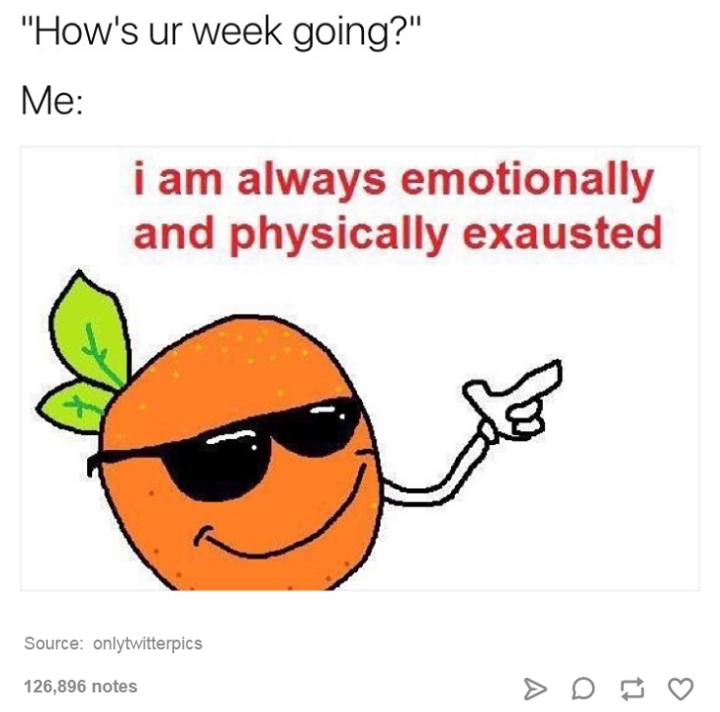
Memes as Art
Clouding the screens of Internet users daily, memes have become commonplace to social media consumers. They have cultivated social media’s built-in joke format. Starter packs, pop-culture references, captioned screenshots, or comment-your-type-below photo collages, each meme is just a like, favorite and scroll away.
Coined by biologist Richard Dawkins in his 1976 book The Selfish Gene, the term “meme” was originally used to describe the smallest units of culture spread through copying or imitation. With the rise of the digital era, the term has evolved to become commonplace among Internet users. Bulletin board websites and online chatrooms such as 4chan and Reddit gave rise to the “Internet meme.”
Breaking from its original classification, the new tag of “Internet meme” takes on an altered significance from Dawkins’ definition. According to the Oxford Living Dictionary, a meme is an image, video or text that is copied and spread by Internet users, usually humorous and shared often with slight variation.
Their ability to spread quickly allows content to change and shift, but each re-edit speaks to larger social climates. According to Limor Shifman’s “Memes in Digital Culture,” memes “diffuse from person to person, but shape and reflect general social mindsets.” Social media allows memes to be reached many users, while still offering an air of humor and individualism of the creator.
Using humor as a mask, some meme subgenres have evolved as a way to laugh about not-so-funny feelings. Memes, and social media generally, have become a mechanism to cope with mental illness, relying on harsh humor to relate personal emotions. With sensitive issues, though, memes can become a double-edged sword, with sharp comedy bordering between humorous and offensive.
But first, you need to be meme-literate before you can be meme-cynical. Baby steps towards self-deprecation, friends.
What makes a meme, a meme? Take the latest viral image of Reece Simpson, a.k.a. Roll Safe, the protagonist of the British parody show #HoodDocumentary. Played by Kayode Ewumi, the image shows Roll Safe tapping his head paired with a sly smile. The popular photo can be circulated with whatever caption the creator chooses, leading to various meanings centered around the same image. Most offer slant-advice and crafty lifehacks based on the image’s social cues. Popular edits include captions reading, “you can’t be broke if you don’t check your bank account,” “you can’t be sad if you have no emotions” or “you can’t be suffering from an emotional breakdown if u never sit down and self assess ur thoughts and feelings and live in constant agony.”
Seems like valid advice.
Yet with all jokes, memes distinctly establish an in and out group. Some will get the joke, others will not. According to Shifman, memes and meme genres aid in the “construction of group identity and social boundaries.” Different images and videos, along with the context in which they are used, lend themselves to smaller subgroups of Internet users.
Imagine the Internet as a high school cafeteria. There are distinct groups that form among people who share common interests; the band geeks, the sport freaks, the political student government clan, the academics. Each has their own specific jokes and humor centered around a shared knowledge of a subject. These groups may blur online as the Internet allows for multiple identities, but ultimately the same forms of inclusion and exclusion remain.
Acting as marks of culture, different social media sites engage with memes in differing ways. Facebook is the most widely used social media site with almost 2 billion users, according to Statista. Sites such as the blogging service Tumblr are oriented to a niche, smaller group of users – only 550 million registered users, and over half under the age of 34 in the U.S.
Number of users, age and platform style help change the way users engage with memes. Small variations can be seen in spelling, shared images and subject matter, with each social media site catering to a different identity.
For example, I could easily find my grandmother on Facebook sharing cat videos, which happens a bit too often. I could just as easily find the boy I went on a few dates with on Tumblr, sharing a meme from Harmony Korine’s 1997 film “Gummo.”

But just an example. Not like this actually happened.
Behind every Internet screen and carefully curated meme is a person. Simon Handmaker, a sophomore at DePaul University, started creating memes at age 16. Introduced to memes by a Polish friend, Handmaker originally began making memes centering around medieval Slavic artwork. The duo created a Facebook page dedicated to their products, skyping over artwork and bouncing jokes until reaching the perfect level of comedic ingenuity.
Four years later, Handmaker has curated his memes to fit his personal tastes, branding a meme subculture to his own control. From Slavic artwork to Hegelianism, Handmaker’s memes are more for the creator than the observer.
“I like that it lends itself to niche jokes,” said Handmaker. “I can have the cover of Nirvana’s ‘Nevermind’ album and photoshop the swimming baby with the baby from ‘Eraserhead’ and only people with knowledge of the two platforms will get it. It just tailors itself to a really specific group of people.”
It’s a careful juxtaposition of format and content. While an observer can recognize the image as a meme, they may not understand the joke’s content.
“Memes are just big inside jokes,” said Handmaker. “It’s all just observational comedy.”
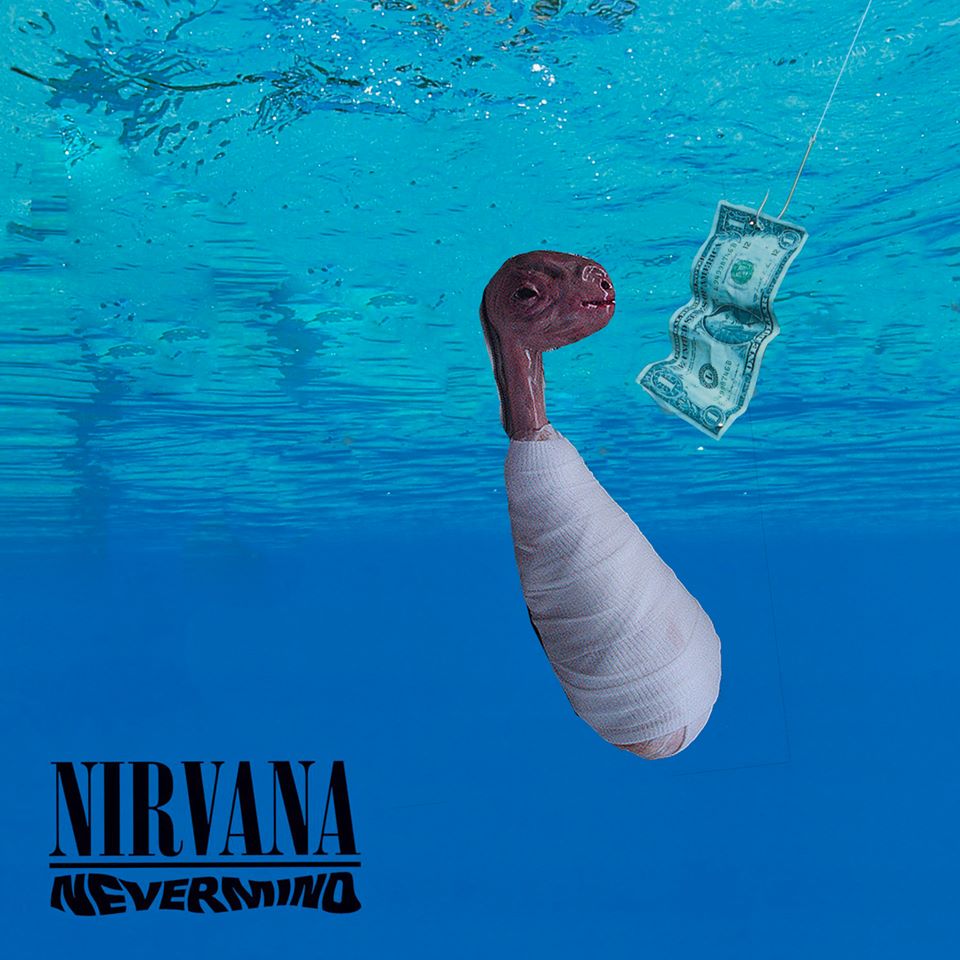
DePaul sophomore Reuben Diaz likes to think of memes with a bit more complexity. To Diaz, memes are just a contemporary medium of art.
“There are different genres, subgenres, recognizable tropes, memes about specific things,” said Diaz. “They’ve got everything art has, it’s just a new medium for people to be creating.”
You don’t have to be an artist to appreciate art, just as you don’t have to create memes to engage with them. Scrolling through memes on social media is like walking through the Museum of Modern Art. You’ve got different genre wings, artists and topics. Except it’s very modern, patchwork pop-culture art that can be accessed under bedcovers at 3 a.m. or when taking an extended bathroom break. Then you can like, share, screenshot, favorite, or replicate that art while staying in the same position. Free of charge.
How can MoMA compete?
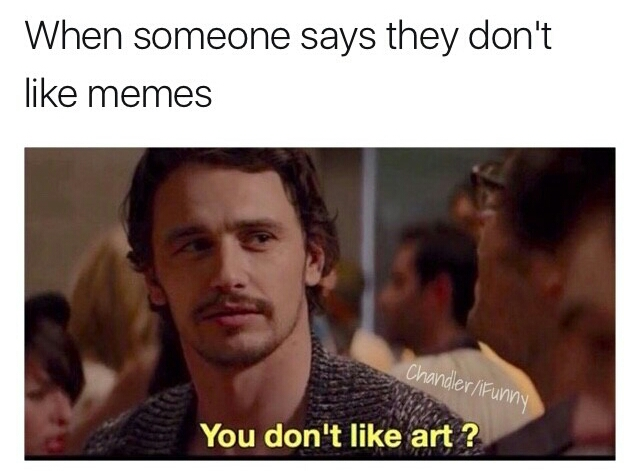
Memes as Coping
Neurotypicals when you display a trait of your mental illness that is considered “quirky” and “cute”
The hole I dug myself into by not acknowledging my serious problems
Me revisiting the cruel truth that theres a stigma around treating ur mental health in society and it discourages ppl from seeking help
These are just a few of the captions Instagram followers can find when they stumble across @sagittariusmemeadmin’s page.The bio reads: “I make memes instead of seeking a therapist which would be funny if it wasn’t true.” This is just a microcosm of others scattered across social media platforms. Self-deprecating, sardonic, stressing about school, relationships issues and mental illness-centric – the content of these pages comes packaged as easily-dispensable dark comedy.
Yes, we’ve reached meme-cynical. Too much? Too bad, find another meme subgenre.
As social media flourishes, memes have become an accessible format to foster intimacy concerning the growing dialogue on mental health. These pages are often relatable to followers and offer a sense of connection for others going through the same problems.
“It’s like, ‘Do you like memes, do you hate yourself?’” joked Gwenyth Sword, a sophomore at the Illinois Institute of Technology. “They bring people together because we all struggle without blatantly saying.”
Sword scrolls through her phone, showing me various meme pages she’s a member of, occasionally laughing at some of her favorites (she finds anxiety-related memes hilarious). She shows me group messages she shares with her friends, sending memes back and forth followed by the occasional “lol” or “totally you” response.
“Mental illness was often neglected and not widely talked about before our generation,” said Sword, who said she struggles with general anxiety and obsessive-compulsive disorder. “For a lot of us it was ignored growing up, and now joking about it is an easier way to talk about it.”
Columbia College sophomore Maya Elrose agreed. Elrose’s Facebook page is scattered with self-made memes, including photo essays, text screenshots and lo-fi selfies. She claims her sharing helps her deal with her own thoughts and issues, using memes “to put [her]self out there, as a joke.”
“It’s becoming OK to be mentally ill and have those struggles, partly due to memes,” said Elrose. “It’s a way to cope with [stuff], whether you are making or viewing.”
On a Sunday morning in February, Elrose woke up around 9:30 a.m. She had gotten home around 1 a.m. the night before, attending a local DIY music show a friend was performing at. Coming home tired, a little drunk and cold from the February night air, she had slipped into bed without thinking.
Now she sat, rubbing her eyes free of sleep. When she reopened her eyes her hands were black, covered in thick clumps of mascara and dark eyeliner she had worn the night before. She looked down, and her pillowcase was smeared with the same black powder along with her #blessed pajama shirt.
She looked in the mirror and thought she looked “crazy.” Makeup strewn across her face, eyes heavy from sleep. Elrose brought her fists to her face and smudged the makeup even more. She looked in the mirror again. Let’s keep this look going she thought.
She took some selfies to capture her morning look. She remembered she had saved a screenshot from Sam Mendes’ “American Beauty” and was inspired. Later that day she paired the two side by side with a caption reading: “LOL aMiRITE save me from meself.”
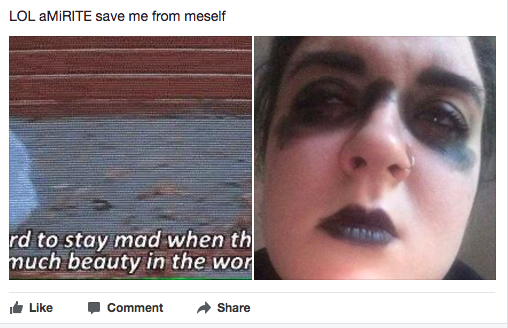
Modern art in the making. Take note.
“They kinda serve as comedic relief after situations that aren’t easy to deal with,” said Elrose. “It’s a way for a new outlook.”
@sagittariusmemeadmin is a public profile with over 2,500 followers. @deadbeatpunkboyfriend has over 13,000 and publishes similar content. @scariest_bug_ever has over 98,000, with a bio reading “my Venmo is @scariestbugever and I’m very sad.” I guess thousands of others are, too.
A like can be compared to a nod of validation. It’s saying, “I understand your struggle and I can relate. You’re not alone. Also, hey, that’s pretty funny.” With the touch of a finger.
“Memes are meant to be shared, so in reblogging, reposting, sharing, etc. a person can not only disclose their suicidal ideation or depression in a non-committal way, but be comforted by the fact that it has been or will be shared by many people who feel the exact same way,” Nicole Vega said. She’s an admin for the Facebook group “Same Same But Different,” a meme sharing page where group members indicate whether they feel “same” or “different” than the meme. It’s like an online forum for self-identification.
“Memes let us know we’re not alone,” said Vega.
Memes as Triggers
When people forget that “meme accounts” are actual people and do not exist to satisfy the needs of others
@deadbeatpunkboyfriend posted the above meme on Jan. 15, including a caption reading “we are not here to give you advice and that memes reflect personal opinions/experiences. If you don’t like the memes, then make your own account or move on.”
Memes that focus on themes such as mental illness can be funny to some, yet offensive to others. Teetering between comedy and distress, these images vary for followers who subscribe to these subcultures.
Take the blunt nature of @wretchedfemale’s post from January, reading, when your memes are incredibly toxic and by sharing them you’re furthering an epidemic of dark thoughts and glorifying bad behavior but they’re just so gratifying to create and make you feel good in the short term, and others may feel that way as well which keeps the cycle going.

If a person could be a meme connoisseur, DePaul senior Steven Long may hold the title. He doesn’t make memes, but immerses himself in meme culture. Long introduces me to various Facebook pages that are specifically meme-related such as “Humans of Tumblr” and “I feel personally attacked by this relatable content.” These tailored groups include thousands of online users, mostly other teens and young adults. Like the accounts of @deadbeatpunkboyfriend and @wretchedfemale, these pages focus on subjects that can be sensitive.
Long tries to invite me to these pages. But first, I have to be accepted by the group admin to see if I’m “in.”
I guess it’s back to the high school cafeteria.
“Memes are a social currency,” Long adds with a shrug, tipping his coffee cup back as I wait for an admin response. I can’t help but feel Internet-lame, like I’m waiting to be accepted to the cool-kid table. It’s a table of belittlement and self-roasting, but, hey, it’s just a joke, right?
“The admin or mod’s job is essentially to uphold the guidelines put in place by the admins, which primarily serve to make the group a safe, inclusive space that prioritizes marginalized people,” said Vega. “Keeping the page private helps us do that, by adding to the sense of community within the group.”
As an admin, Vega works to monitor content and accept contributors. She admits that if people are invited by their friends already in the group, there’s a better chance they will be accepted because they “believe in our core values.”
Elrose tells me of similar Facebook groups, yet even more exclusive. The Facebook page “little mentally ill things,” of which Elrose is a member, requires users to complete a questionnaire before being accepted. These extra steps are to ensure, with the ambiguity and anonymity of the world wide web, that users feel safe to post and share in these groups without the fear of trolls — someone who starts arguments by posting inflammatory or degrading messages in an online community.

Safety is key, especially when referencing topics such as anxiety, depression or PTSD. While these jokes may be funny to some group members, they can also be triggering and upsetting to others.
“Posts can be hit or miss,” said Long. “There is an implicit understanding that as funny as it can be it can also be volatile.”
Pages like “Same Same But Different” and “I feel personally attacked by this relatable content” include pinned posts by admins at the top of the group page, reminding members of the importance of content warnings. These groups advise captioning each post with a short description of the trigger, such as “TW: depression” or “TW: alcohol” above the shared meme.
“Content warnings are just another way we try to make the space safer and more welcoming to marginalized people,” said Vega. “A lot of popular memes discuss mental illness or traumatic experiences, so warning people beforehand who may not be in a healthy enough place to be … is just being mindful that.”
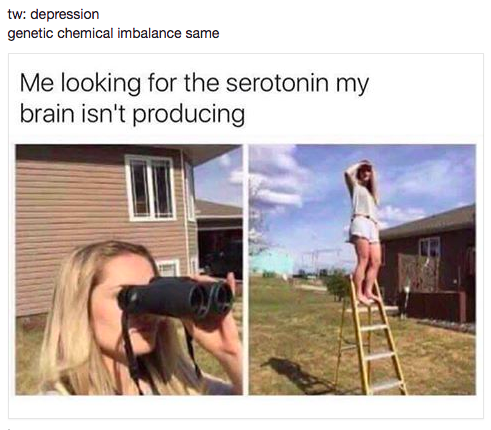
From Same Same but Different Facebook page
Everyone is in a different place. Everyone deals with personal struggles differently. Memes may appear as jokes, but their intent can often be to cope.
“If you’re not available mentally you don’t have to see it,” said Sword. “Memes are a way of joking about the other entity in your brain. You can laugh about what the monster says.”
Memes as Connection
This is a space for compassionate humor, relatable memes and sharing experiences reads the group description for “I feel personally attacked by this relatable content.” A nice place 2 find humor in ur sadness.
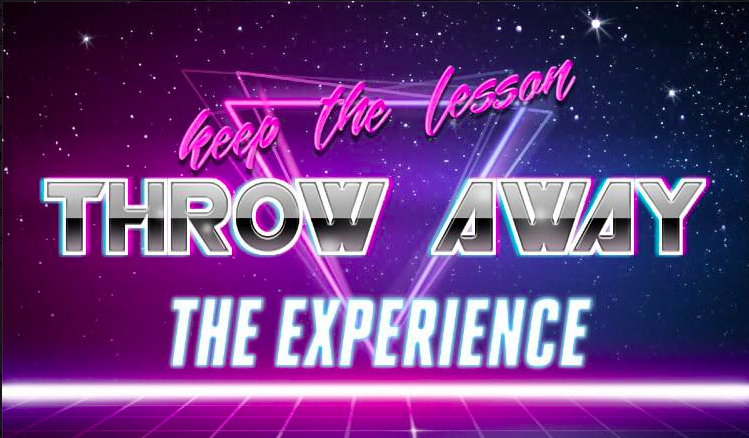
Cover photo of I feel personally attacked by this relatable content Facebook page
“There’s a sense of community,” said Long. “It speaks to destigmatizing conversation. There’s no other casual way to bring it up.”
Each page acts as a table in the cafeteria. Members may not interact personally, but they all share exposure to the same posts, a connection that there are other users feeling the same way, relating to the same experiences. Social media can be isolating, but it can also be inviting. Millions of little online communities sharing dialogue that may not arise when speaking face-to-face.
“Mental illness is not as taboo as people think it is,” said Sword. “It makes me realize others are going through the same thing as me and know there are parts that are OK to laugh at sometimes.”
Grab your lunch and take a seat. Let’s swap jokes.
I returned back to the reporting class I had fled three weeks prior. I arrived early and opened Instagram, scrolling through the Explore page of celebrity updates, makeup tutorials and meme accounts. I stopped at a meme from the account @scariest_bug_ever, who I had been following for a few months. The image was a baby lamb dressed in a floral coat, accompanied by emboldened text.
If I can make ONE person laugh long enough to forget their problems for a moment, then my day was not wasted.
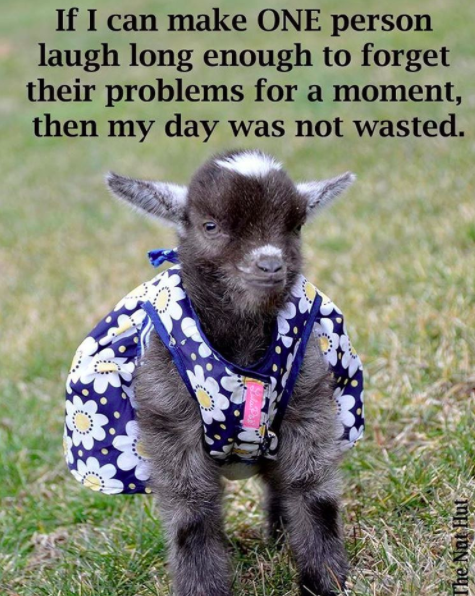
From @scariest_bug_ever Instagram
4,236 likes. 88 comments.
The number stunned me. I was a microcosm of the better, the worse, the personal struggles and emotions of 90,000 other followers floating through life. Pain is universal, but so is humor. And memes are a pretty, accessible package to wrap it all up, shouting, I am broken, but let’s make the breaking feel light. Even if only for two minutes before class, doctor’s appointments and life resumes.
I’d follow that.




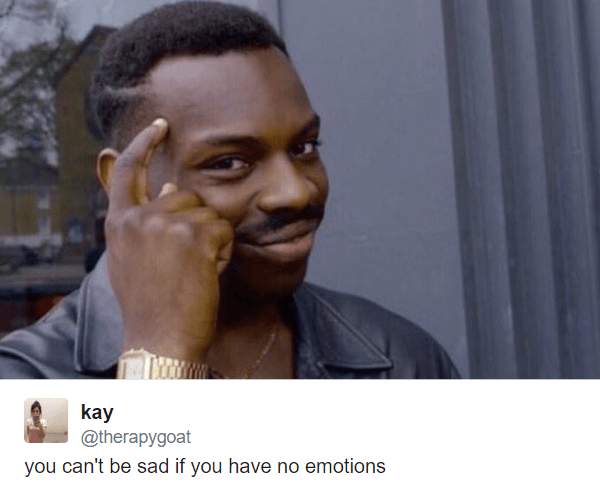
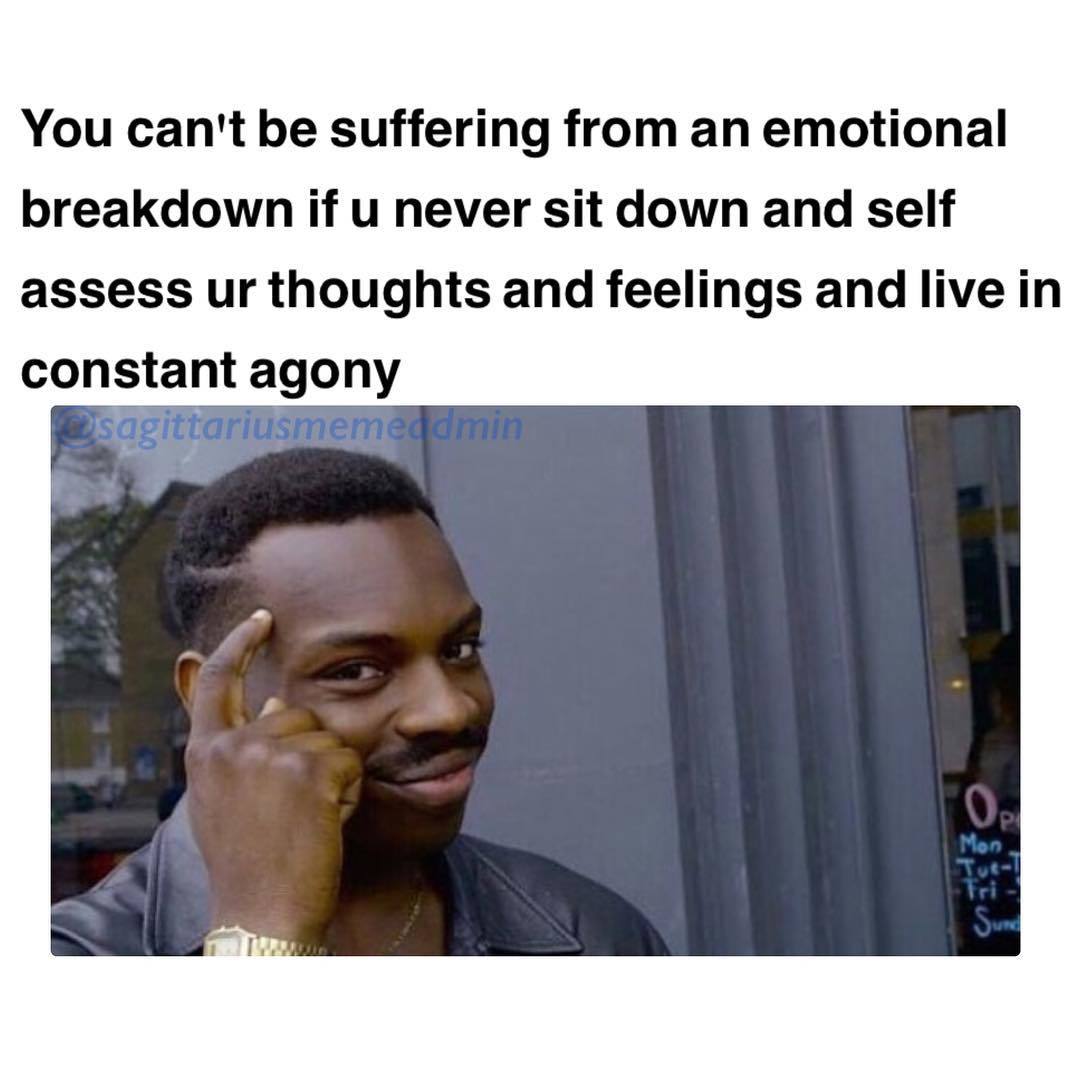


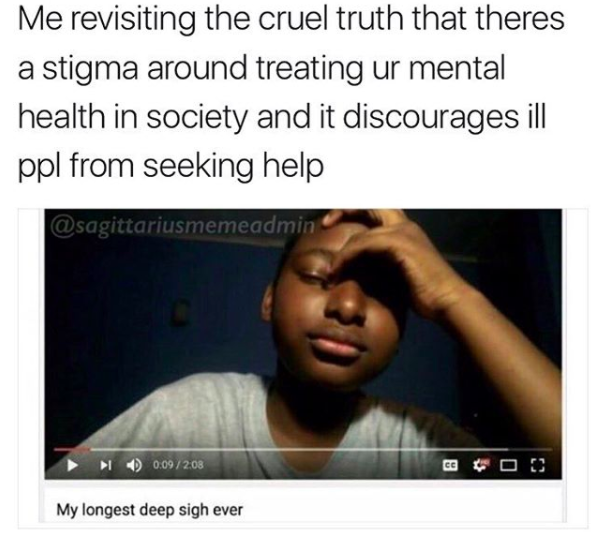

#Relatable – Dawson 102 Princess and Hero
6 November
[…] http://fourteeneastmag.com/index.php/2017/06/16/meme-through-the-emotions/ […]
Social Media and empathy: how has it changed us? – The Cougar Call
3 February
[…] There is that positive note, we must acknowledge when we talk about memes- it is a great way to start the conversation of other important issues like mental health. Again, many like to join in on the trend and may not actually have any or of the same degree of mental health issues others express. Memes only serve as a way to open that conversation but as a coping mechanism, the theory revolves around being able to share your experiences and hoping the out of context image or … […]
Mental Breakdown Meme Free Download The Most popular Online - www.quillingcafe.com
26 August
[…] Large: fourteeneastmag.com […]
Chronic Illness and Depression and their Relationship with Social Media – Nelson Pittar Site
1 September
[…] Happold. M, 2018) “Meme Through the Emotions” 14 East, http://fourteeneastmag.com/index.php/2017/06/16/meme-through-the-emotions/ […]